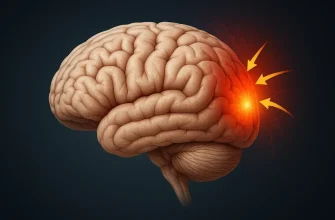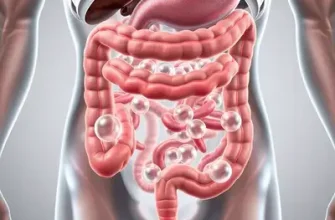After undergoing gallbladder removal surgery, it is common to experience pain or discomfort in the area where the organ used to be located, which is under the right rib cage. This discomfort may be due to a variety of factors, including surgical trauma, inflammation, or nerve irritation.
It is important to understand that this type of pain is typically normal and should improve over time as the body adjusts to the changes. But, if the pain is very intense or lasts for a long time, it is crucial to consult a medical expert to find out if additional examination or therapy is required.
In the meantime, using non-prescription painkillers, taking some rest, and performing mild stretching exercises may assist in reducing the symptoms.
Causes of the Pain Under the Right Rib Cage After Gallbladder Removal
Here are the top 5 reasons why you may experience pain under the right rib cage after gallbladder removal:
- Bile duct injury: While performing the surgical procedure, it is possible for unintended harm to occur to the bile ducts. This can lead to inflammation, blockage, and intense discomfort in the area below the rib cage. Other indications of this condition may involve yellowing of the skin (jaundice), an elevated body temperature, and shivering.
- Post-cholecystectomy syndrome (PCS): PCS, also known as post-cholecystectomy syndrome, can occur in certain individuals following the surgical removal of the gallbladder. Symptoms of PCS can manifest as continuous discomfort beneath the right rib cage, bloating, feelings of queasiness, and frequent episodes of diarrhea. The specific underlying reason for PCS remains uncertain; however, it is believed that it may be linked to the flow of bile from the liver into the small intestine.
- Pancreatitis: In rare cases, gallbladder removal can cause inflammation of the pancreas, leading to pain under the rib cage. This can be caused by a medical error during the surgery, or by an underlying condition, such as alcohol abuse or high triglycerides.
- Gas and bloating: After gallbladder removal, the digestive system may need time to adjust to the changes. This can lead to gas and bloating, which can cause discomfort, including pain under the rib cage.
- Liver problems: The liver is positioned right below the rib cage on the right side, and issues with this organ can result in discomfort in that region. Sometimes, if the gallbladder is taken out, it can result in harm to the liver, which is then evident through pain, yellowing of the skin and eyes, and alterations in the color of urine and feces.
Possible Symptoms Related to Pain under the Right Rib Cage after Gallbladder Removal
Even if your gallbladder has been removed, it is possible to still feel pain or discomfort in the upper right area of your abdomen, particularly after consuming foods high in fat or oil. This could be a result of different factors including injury to the bile duct, dysfunction of the sphincter of Oddi, or the presence of remaining stones or sludge in the ducts. To help you know what to watch for and when to seek medical attention, here are some related symptoms that you should be aware of:
- Nausea and vomiting: If you feel queasy or sick to your stomach along with the pain under your right rib cage, it could indicate a blockage or inflammation of the common bile duct. This can prevent bile from flowing properly and cause a build-up of pressure that triggers nausea and vomiting.
- Jaundice: If your skin and eyes turn yellow or your urine becomes dark, it could signal a problem with your liver, such as a blockage of the bile ducts or an infection. This can cause bilirubin, a waste product that is normally excreted through the bile, to accumulate in your body and show up as yellow discoloration.
- Fever and chills: If you have a fever above 100.4°F or experience shivers and sweats, it could indicate an infection in your biliary system, such as cholangitis or pancreatitis. This can cause inflammation, pain, and even sepsis if left untreated.
- Indigestion and bloating: If you feel gassy, bloated, or uncomfortable after eating, it could suggest that your digestive system is having trouble breaking down fats and absorbing nutrients. This can be caused by a lack of bile flow or an imbalance of gut bacteria that affects your metabolism.
- Back or shoulder pain: If you feel pain or discomfort in your back or shoulder area, it could be referred pain from the biliary tree, which is located behind and beneath the liver. This can be due to spasms or inflammation of the sphincter of Oddi, which regulates the flow of bile and pancreatic juice through the duodenum.
- Chest or heartburn: If you feel a burning sensation or pressure in your chest or upper abdomen, it could be acid reflux or gastroesophageal reflux disease (GERD), which can be aggravated by a fatty meal or lying down after eating. This can be caused by the relaxation or malfunction of the lower esophageal sphincter (LES), which separates the stomach from the esophagus and prevents backflow of stomach contents.
- Anxiety or depression: If you feel anxious, depressed, or stressed about your condition or its impact on your life, it could worsen your pain or delay your recovery. This can be due to the fear of complications, the loss of a body part, or the uncertainty of the future. It is important to seek support from your healthcare team, family, or friends, and to follow a healthy lifestyle that includes regular exercise, sleep, and nutrition.
If you notice any of these signs or if you continue to suffer from intense or long-lasting pain beneath your right rib cage following gallbladder surgery, it is important to seek medical advice from your doctor or surgeon so they can assess the situation and provide necessary medical care. Tests such as blood tests, ultrasound, CT scan, or endoscopic retrograde cholangiopancreatography (ERCP) may be needed to diagnose the underlying cause and guide the appropriate management. In some cases, additional surgery or medication may be required to alleviate your symptoms and improve your quality of life.
Treatment Methods for the Pain Under the Right Rib Cage After Gallbladder Removal
If you have pain beneath your right rib cage following the surgical removal of your gallbladder, know that many others share this concern. It is a frequent complaint among individuals who have undergone this operation. To relieve the discomfort and cease the pain, here are a few suggestions:
- Manage your diet: After the surgery, it’s crucial to give your body enough time to heal by following a proper diet. Avoid fatty, greasy, and spicy food for a while, and consume more fiber-rich foods such as vegetables and fruits. Avoid carbonated drinks, caffeine as much as possible. And, of course, give up alcohol.
- Stay hydrated: Drinking plenty of water or other fluids (such as herbal or green tea) can help flush out any toxins from your body and reduce inflammation in the area of the surgery. Adequate hydration also helps reduce constipation and bloating, which can contribute to the pain.
- Manage your weight: Weight management is an essential aspect of pain management. Losing any excess weight that you may have can help reduce the pressure on your abdomen and alleviate pain in the area of the surgery.
- Exercise regularly: Regular exercise can help improve your overall health, aid digestion, and keep you active. Incorporating a moderate exercise program into your routine can help reduce pain and ensure a healthy recovery post-surgery. Consult your doctor about a suitable exercise plan.
- Follow your doctor’s instructions: Always follow your doctor’s advice and recommendations. Take medications as prescribed or suggested by your doctor, and attend any follow-up appointments with your physician or specialist (such as a gastroenterologist) as necessary.
- Consider supplements: Certain supplements such as magnesium, ginger, and turmeric may help reduce inflammation and pain. Consult your doctor before taking any supplements.
- Use heat therapy: Applying a hot towel or heating pad may help alleviate pain in the area of the surgery. Be sure to use a moderate heat level and avoid any burns or skin damage.
Conclusion
To relieve pain under the right rib cage after having your gallbladder removed, it is beneficial to take care of your diet, maintain hydration, manage weight, engage in regular exercise, follow your doctor’s recommendations, consider taking supplements, utilize heat therapy, and practice relaxation techniques. If the pain continues or becomes worse, it is important to consult your doctor.









